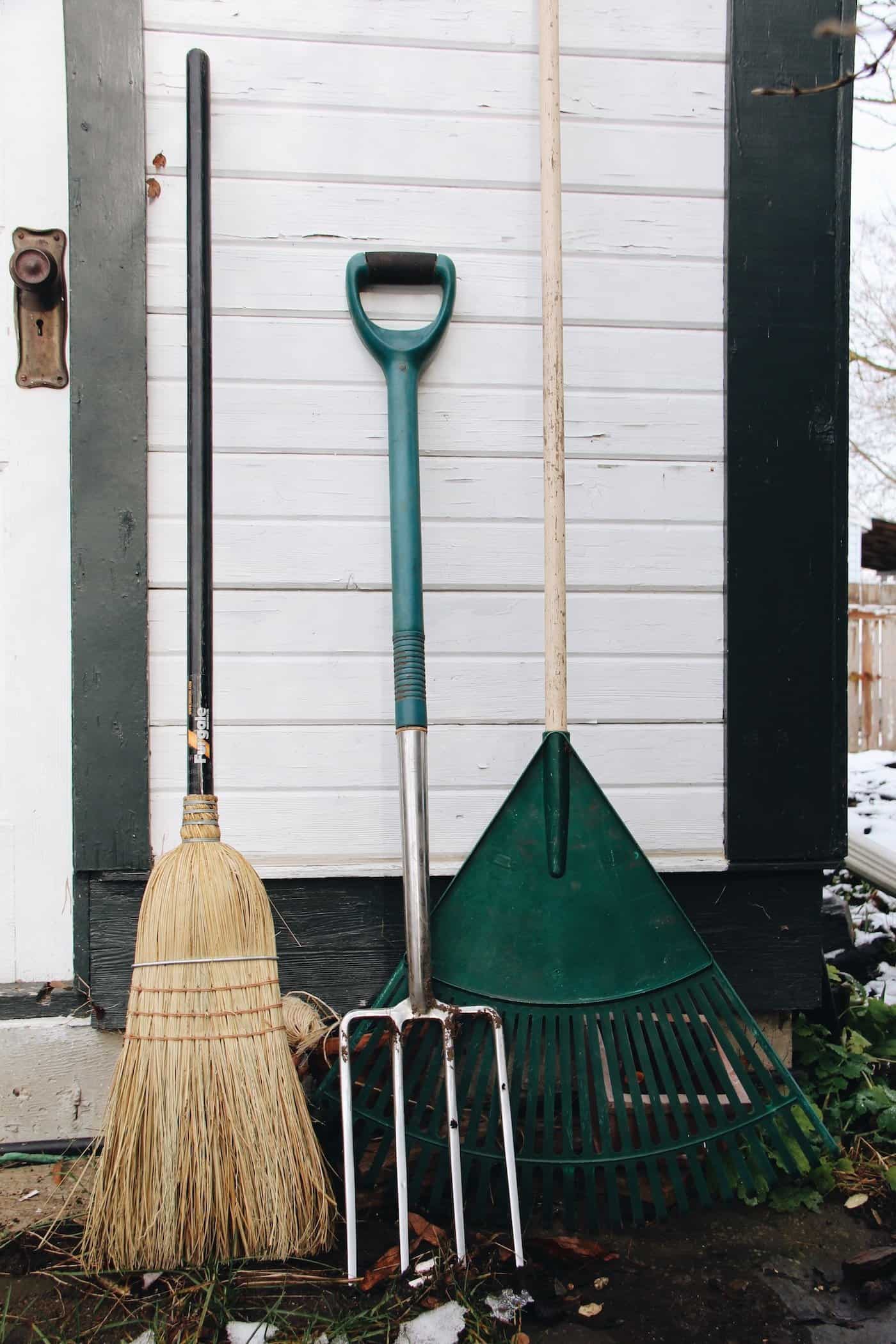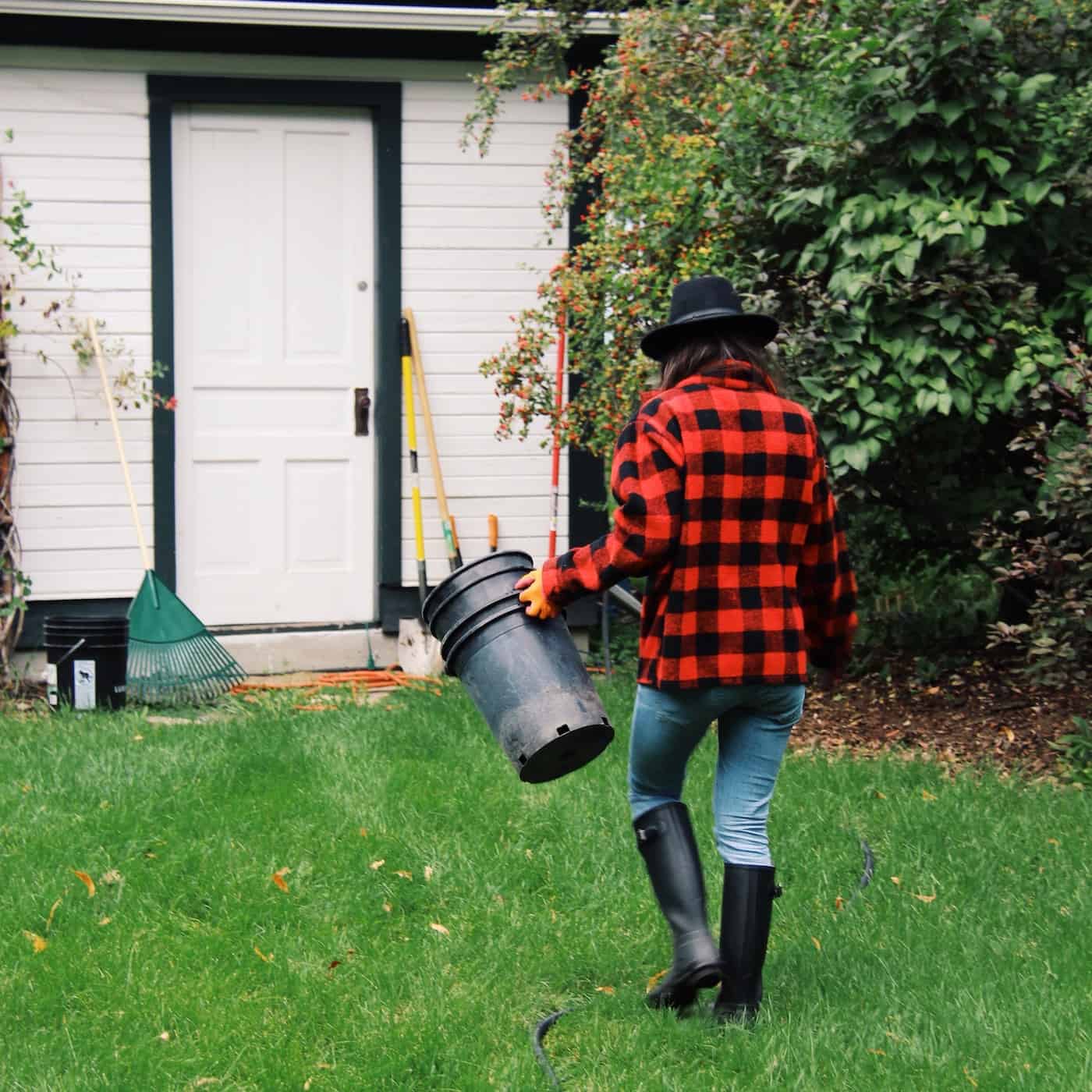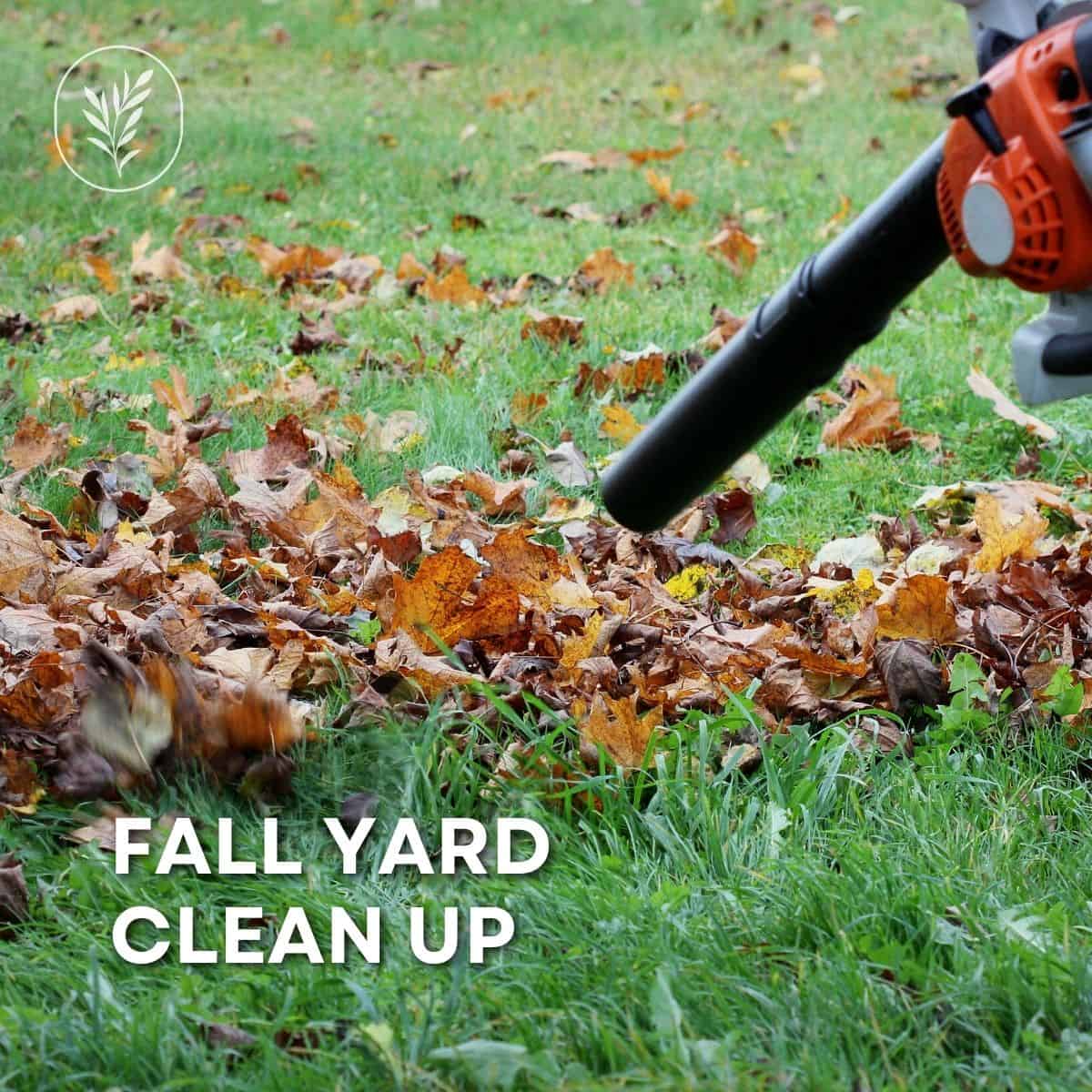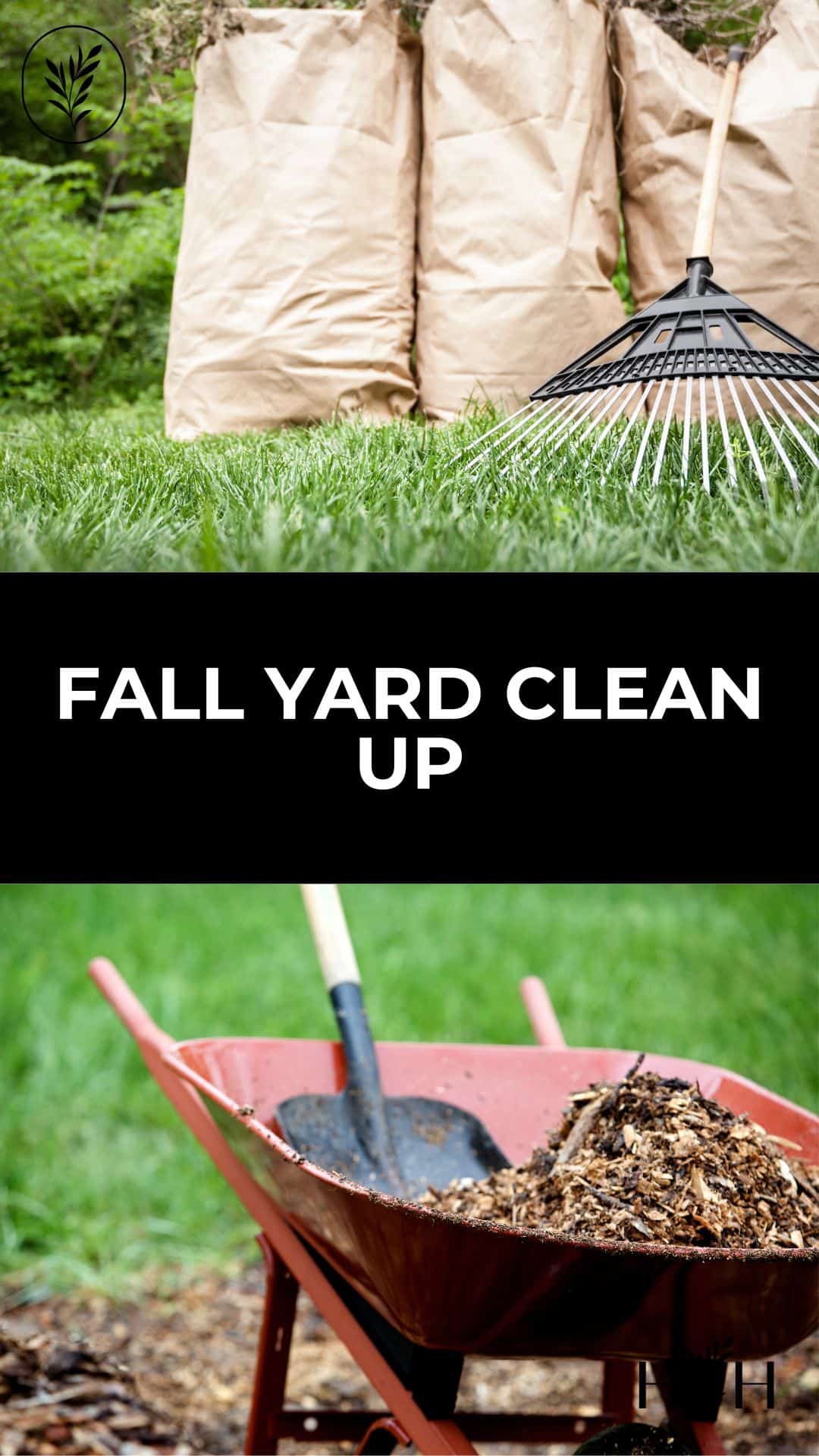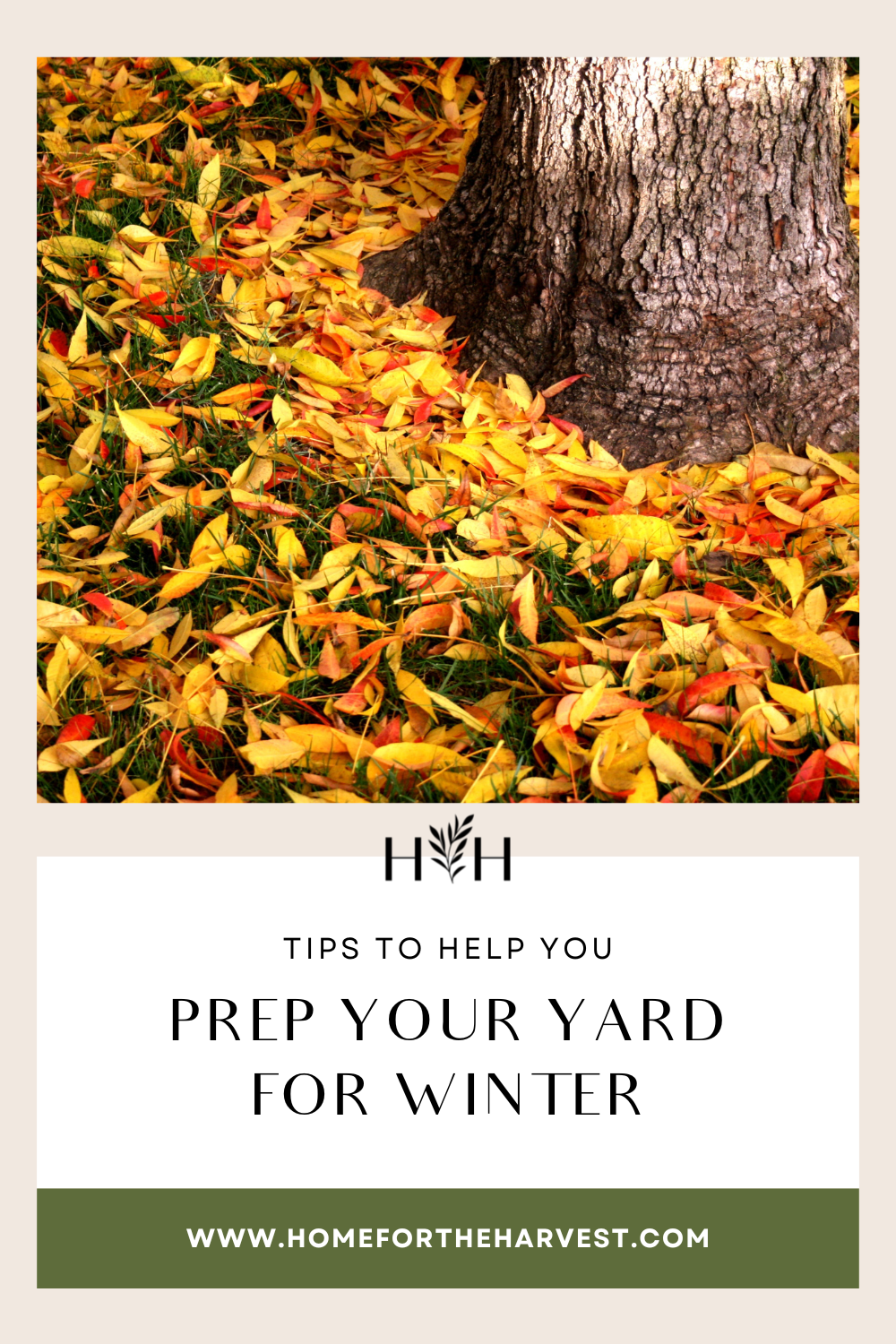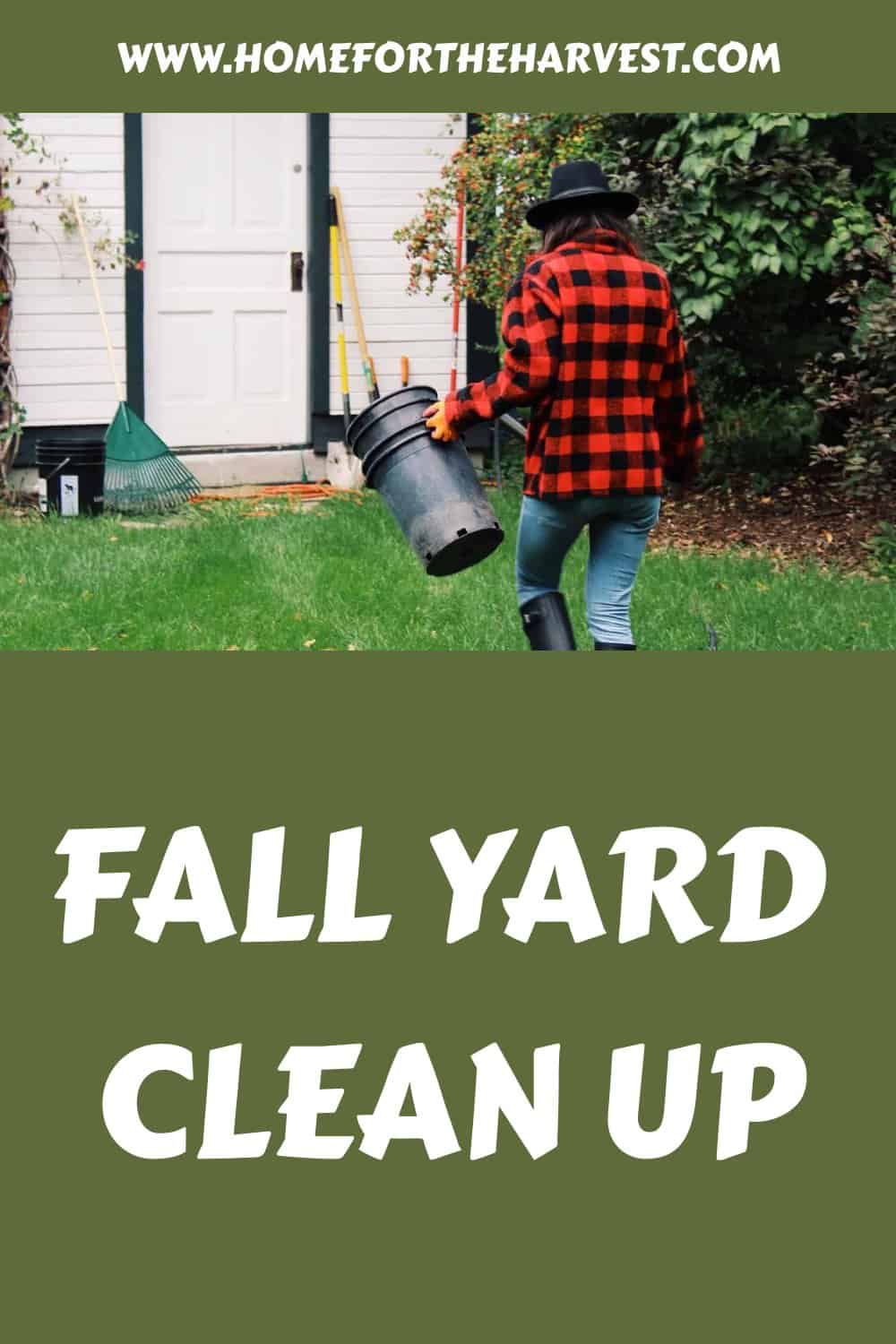Fall yard cleanup makes a big difference preparing your garden for winter. A good fall cleanup will lead to a more productive growing season next year as well as a healthier, green lawn. Let’s look at the fall garden yard work chores that will help keep your garden happy and healthy.
There are a few key areas of the yard to focus on when preparing the garden for winter. Here are the basic lawn & garden categories that require some clean-up in the fall:
- Trees and Shrubs
- Lawn Grass
- Vegetable Garden
- Flower Gardens
Each one of these garden areas has it’s own tasks that will set you up for a great growing year in the spring. Now let’s look at each category in detail. Scroll down for a detailed description of fall garden chores!
Fall clean up yard work chores for trees & shrubs
These fall cleanup tasks will get your trees and shrubs ready for cold weather:
- Collect and shred fallen leaves with a mulching lawnmower or powerful leaf vacuum. A tarp to collect the fallen leaves will also make leaf removal much easier. Compost the shredded leaves into leaf mold compost or use them to as a protective organic mulch over top of tender perennials once the ground freezes. Fallen leaves are gardening gold!
- Wrap tender perennial shrubs with burlap to prepare them for winter by protecting them from desiccating cold winds. Ensure that you wrap them in such a way that snow/ice will not gather on top of the wrapped shrub, crushing it. I like to put stakes around the plant and then wrap the stakes with rough burlap rather than directly wrapping the plant.
- Early fall can be a great time to plant new trees and shrubs. The trees will appreciate the temperate autumn weather, as it will allow them to establish some roots before they go dormant during the winter. Try to get new trees in the ground at least six weeks before the ground freezes to allow the roots the chance to become established before dormancy. Here’s a big list of what to plant in the fall.
- Keep trees well-watered in the fall, especially evergreen trees and hedging plants. Evergreens continue to lose water from their needles throughout the winter. Trees should have no shortage of water before going dormant. If the fall has not been very rainy, or if you have trees in protected dry areas, give them a good watering before the ground freezes as part of your list to prep the garden for winter.
A note on fall pruning
Don’t add pruning to your list of yard work clean-up chores. Fall is generally the worst time to prune trees and shrubs. Pruning encourages plants to grow more, which is not what they need when they are about to go dormant. Let the trees focus their energy for the upcoming dormant season rather than sparking new growth.
Only dead, diseased, or damaged wood should be pruned off in the fall. This includes removing dead branches and peeling wood. Wait until the plants are completely dormant before undertaking any other serious maintenance pruning.
Flowering shrubs should be approached with extra caution over the winter as some shrubs put on flower buds the year before they bloom. This means that for some species, flower buds form in the fall that will bloom early next summer. This category includes some types of hydrangeas and magnolias, as well as many other shrubs and trees that flower early.
Pruning for these flowering shrubs should occur in early summer right after flowering if you don’t want to reduce the number of flowers the next year. Let’s not do any accidental yard work clean-up of next year’s lovely flowers!
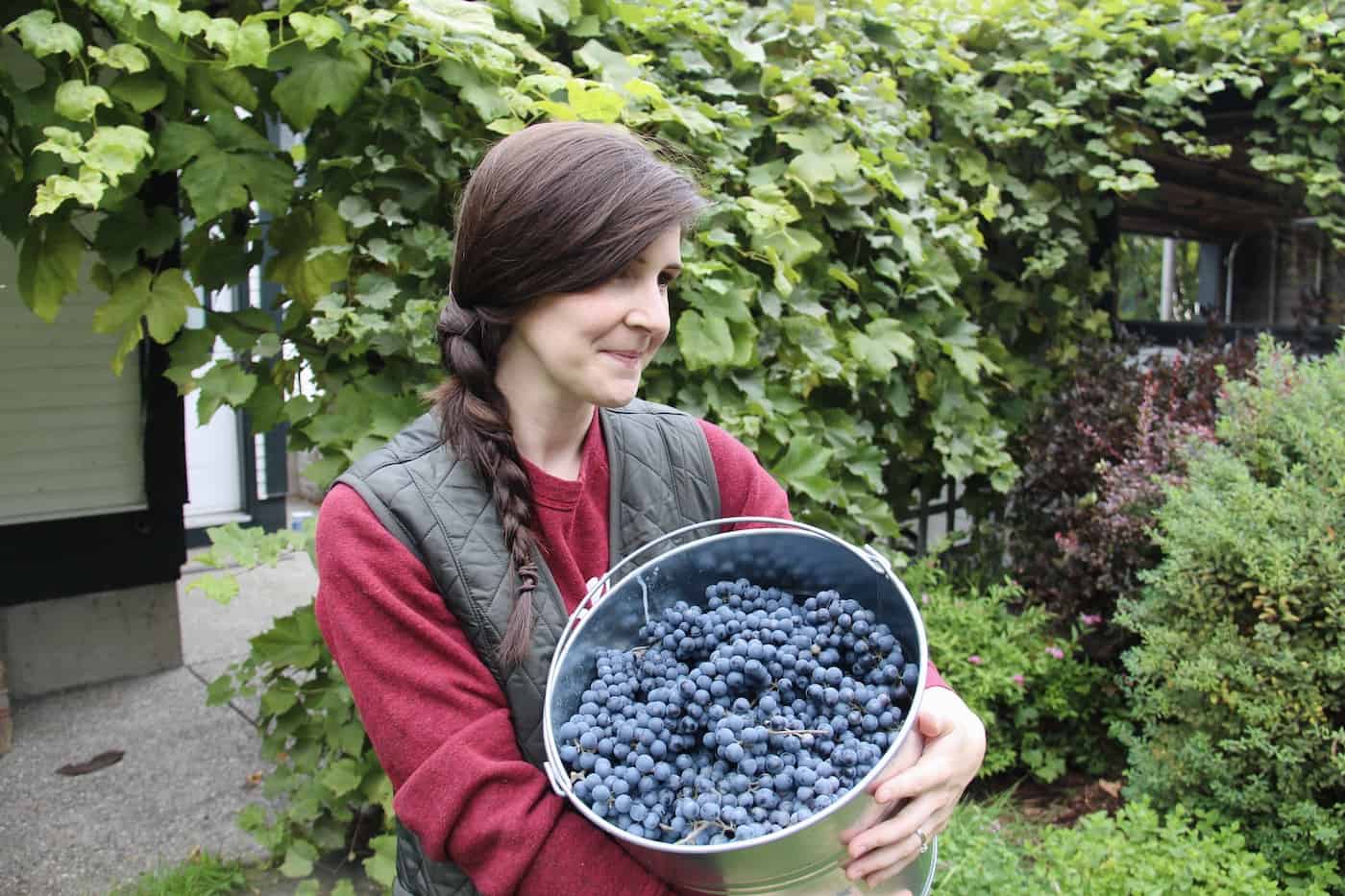
Fall yard work clean-up chores for lawn care
Don’t forget the lawn care in your fall cleanup! Turf grass maintenance is a key part of yard work. The beginning of fall is a great time to repair bare patches or seed new lawn areas.
- Cut the lawn to 3″ high during the fall months, before the ground freezes. Ensuring the grass is at least 3″ high will help the lawn develop strong roots for the upcoming year. Use a mulching lawn mower rather than raking up the grass clippings. The clippings return nitrogen to the grass plants, feeding the lawn after a cutting. The last cut before winter can be a tad shorter to allow for a bit of growth and helps the soil dry faster for the spring while the lawn mower is stored away.
- Rake up the fallen leaves. Fallen leaves will smother the grass if they are allowed to create a mat or leaf pile. Leaf removal is essential for a healthy grass to grow in the spring. The fallen leaves can be used to make an excellent, nutrient-rich leaf mold compost and also can be used as shredded mulch over tender perennials.
- Remember to keep in mind that some trees shed leaves faster than others, and will thus require more maintenance before winter arrives.
- If your soil is compact, aerate the lawn with a core aerator. You can use a handheld core aerator or use a powered machine. Core aerator machines can usually be rented for an afternoon from a local tool rental business (or this can be contracted out). The core aerator removes small deep plugs from the lawn and deposits them on top of the soil, introducing air voids into the lawn to decompress it. When you’re done, it will look like your lawn has goose droppings on it for a few weeks unless you really rake in the plugs. Another option is to follow core aeration with an application of compost:
- Feed the lawn with a thin top dressing of good-quality nitrogen-rich compost. Rake it over the lawn and allow the fall rains to wash the nutrients down into the roots of the grass. If you can’t find a high-quality source of compost, or don’t have the fallen leaves available for leaf mold, there are also some helpful slow-release organic lawn fertilizers that can be used in early fall.
- Overseed any thin spots of the lawn. While planting new, high-quality grass seeds doesn’t exactly sound like the best way to prep the garden for winter, it can really help. Fall is the best time to establish new cool-season grass plants, including the varieties we grow in Canada, provided they have enough time to develop roots. Try to overseed in early fall once the intense heat of summer is gone, but at least six weeks before the ground freezes.
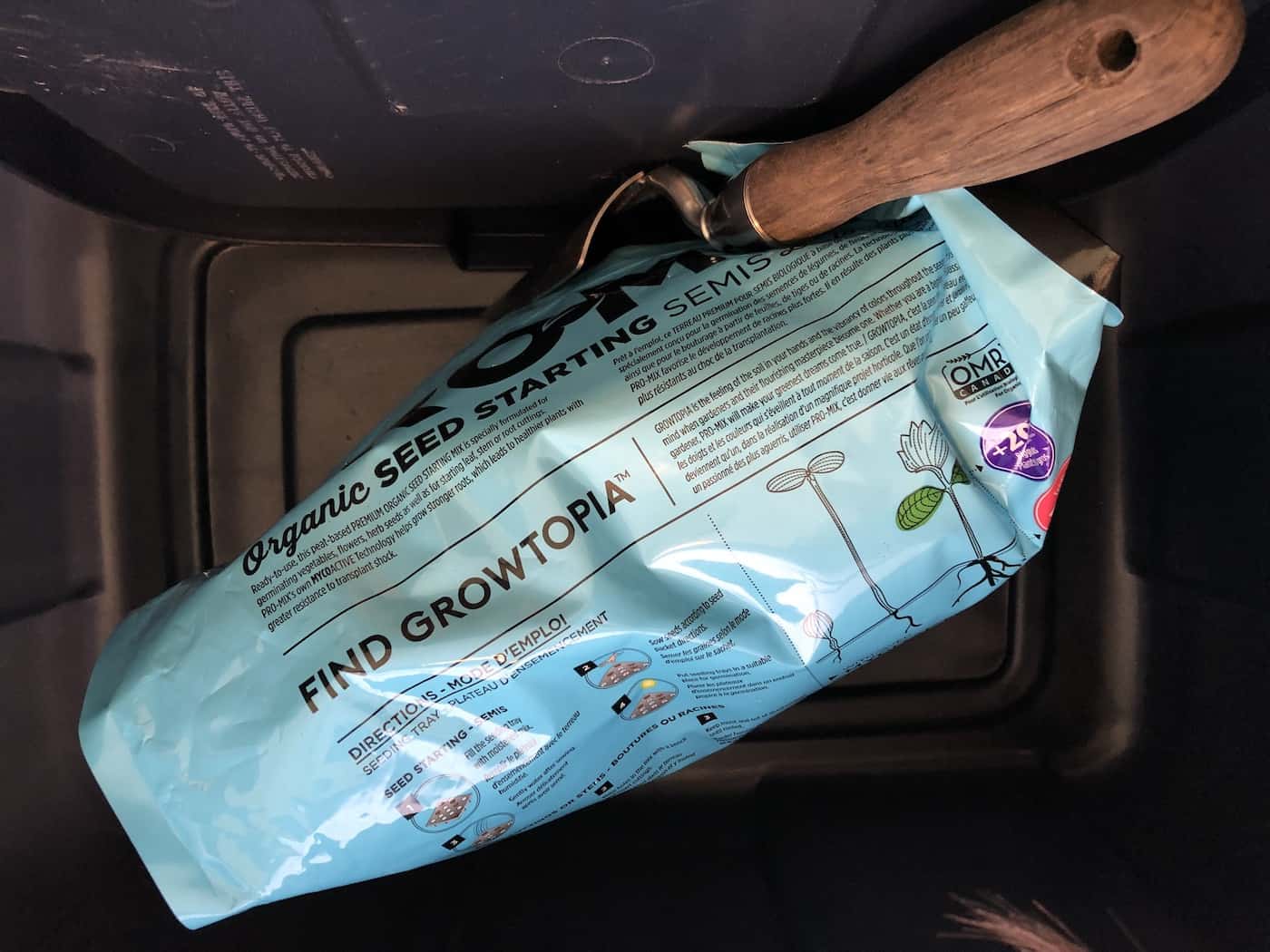
Fall clean up in the vegetable garden
This is one area of yard work that really does need quite a bit of attention in the fall. Here’s how to approach this space to ensure it is ready for next year:
- Do one last round of weeding in your kitchen garden to get the garden ready for winter. Removing weeds (and weed seeds) is a key part of yard clean-up as it will make next spring much easier!
- Once the weeds are removed, observe the remaining vegetable plants and decide if any should be left up over winter for beneficial creature habitat or for their food value for wildlife. Tall seed heads can also be quite pretty to look at during a snowy winter.
- Save seeds from any treasured plants such as extra-tasty tomatoes or mammoth giant sunflower seeds.
- Remove spent annual plants from the garden and compost the plant debris. If you haven’t already, make note of what did well and what didn’t in your Garden Planner. This will help you as you plan next year’s garden. Pretty much everything can be composted except for diseased plants, weeds with seeds, and woody plant stalks.
- Stock the compost pile. A large, hot compost pile will be able to destroy diseases, weeds, and woody stalks, but unless you are confident that your compost will get very hot, leave these few things out of the pile. Green plants from the garden are a good source of nitrogen that will balance nicely with the carbon in fall leaves.
- Any fallen and rotting fruit and/or veggies can be composted along with the fall leaves and garden debris.
- Rake out the garden to ensure you’ve got all the weeds out and to leave a smooth, clean surface for next spring.
- Top dress the soil with 1″ thick layer of compost by raking high-quality compost over the soil surface. If you don’t have your own homemade compost (or enough homemade compost), organic compost is available for order.
- If you’re feeling fancy, you can plant your garden space with a “green-manure” cover crop in the fall. These crops are grown over the colder months and then tilled into the soil in the spring, providing a source of nutrients to next year’s garden. You’ll get that uniform, clean surface without the uncomfortableness of bare soil.
- In early fall, hardy greens like kale can be planted for a winter harvest, provided temperatures don’t get too cold. Here is a big list of winter crops to plant in the fall.
- Garlic is planted in the fall in many areas. Getting the garlic planting bed ready is always an early task during fall yard cleanup! The cloves are planted in September in our area (or October in warmer areas such as the West Coast), and then harvested in early summer. Try to plant the garlic about 6 weeks before the ground freezes to allow it to take root before winter arrives.
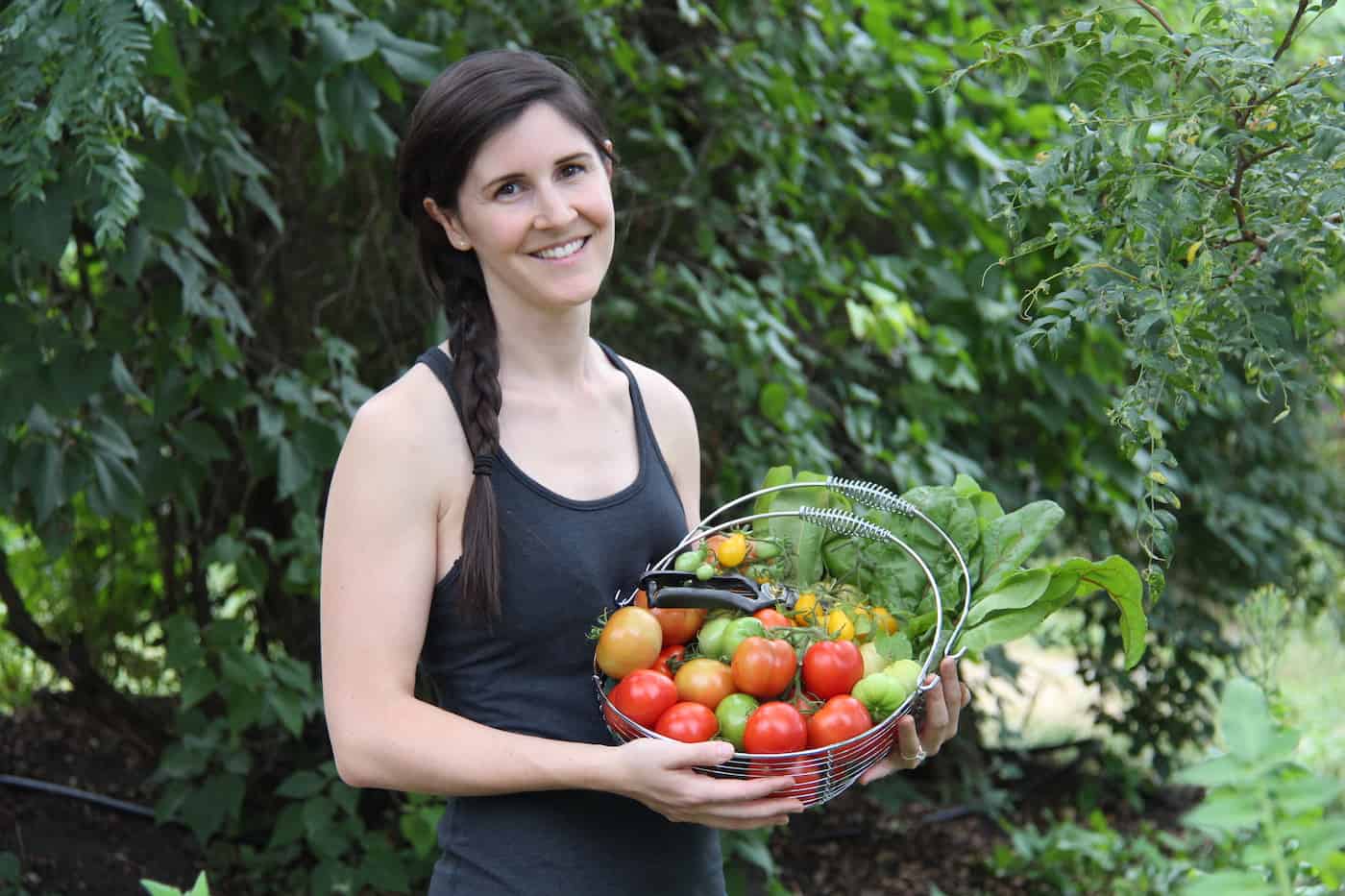
Flower garden fall cleanup
Fall cleanup in the flower garden will make next spring much more enjoyable. Here are some key tips for fall yard cleanup in flower gardens:
- Do one last round of weeding in any formal garden or flower beds.
- Collect seeds from your favourite flower plants.
- Consider leaving some plants up for beneficial wildlife habitat or for winter food forage for birds. If you don’t mind the look of the stalks and seed pods, leave them up until spring. The foliage and stalks will provide winter interest to the garden and flower beds, as well as food and habitat for overwintering beneficial birds and insects. It’s a good excuse not to go overboard when preparing the garden for winter!
- Remove spent annual plants from the garden and flower beds and make sure to compost the plant debris.
- Cut down stalks from any messy herbaceous perennials. These are flowers that come back every year, but the stems die back to the ground in the winter. This includes cutting back peony plants, cutting back iris plants, and cutting back daylilies.
- Protect tender perennial flowers and prevent soil erosion by mulching with several inches of shredded leaves to prep the garden for winter. Apply mulch just as the ground freezes for the winter. Read more about winterizing perennial plants.
- Collect natural craft items you’ll use during the winter such as sticks, foliage, and dried flowers.
- Dig up and store tender flowers such as dahlia tubers. These tender roots can be stored in peat moss or clean sawdust in the basement over the winter, for planting outside next year.
- Plant hardy fall bulbs such as tulips, daffodils, and allium for a show of blooms in the spring.
- Top dress the garden and flower beds with 1″ thick layer of compost by raking the high-quality compost over the soil surface.
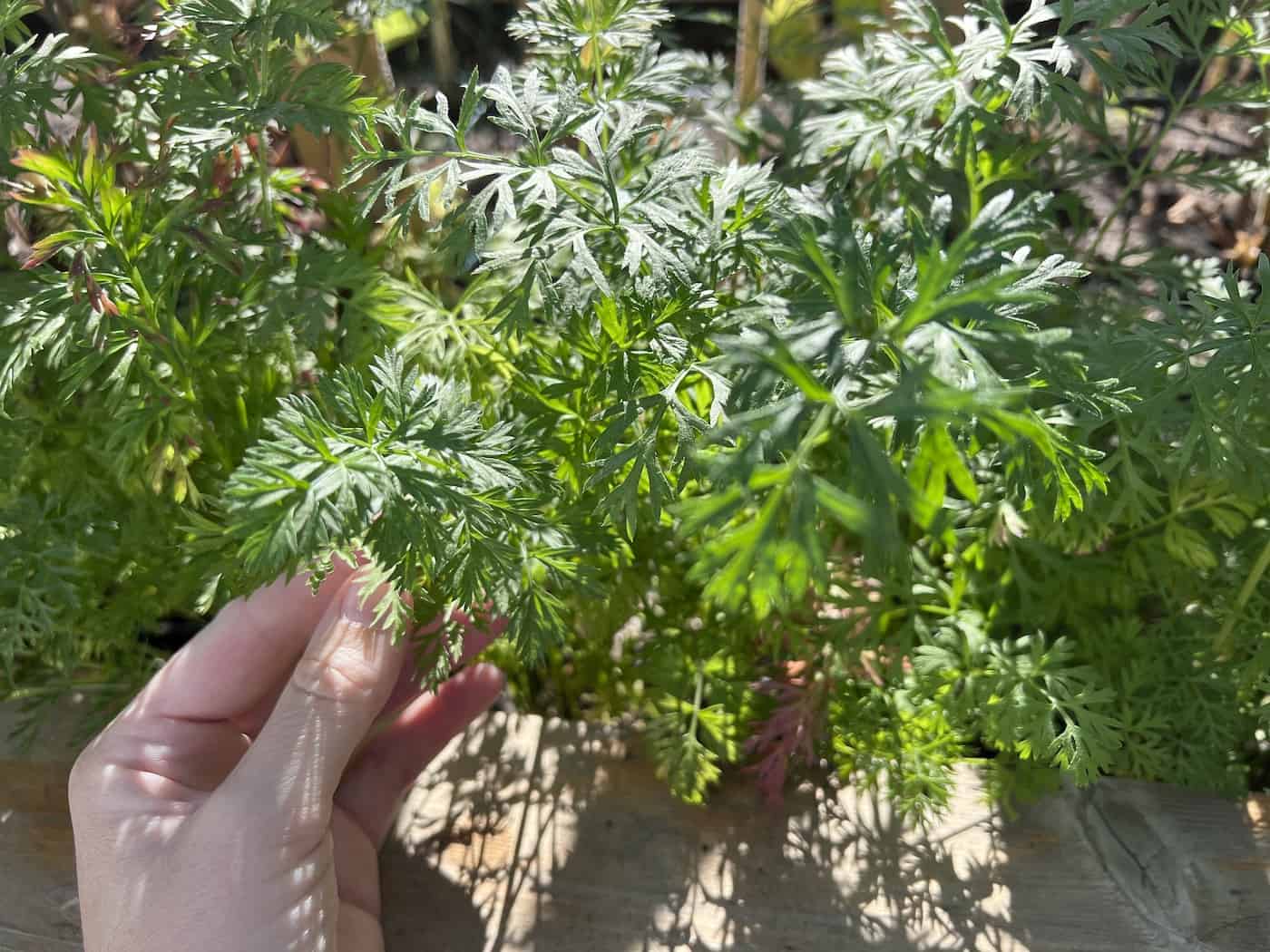
Some extra fall yard clean-up chores
Here are a few extra fall yard cleanup chores to prep the lawn and garden for winter:
- Bring tender potted plants indoors. In our area, this includes potted citrus trees, rosemary, and many types of succulents. Anything perennial that isn’t “hardy to your zone” should be taken indoors as part of yard clean-up.
- Bring in empty plant containers to a protected area such as a shed or garage to guard them from the elements. Terra cotta and ceramic pots are prone to damage in freeze/thaw cycles and should be treated carefully in areas that freeze over the winter.
- Clean seed starting trays that you wish to use next spring for seedlings. I disinfect mine and store them in the basement over the winter months so they don’t crack. Then the trays are also easy to find when I’m ready to start some seedlings in the early spring.
- Take a bag of sterile seed-starting potting soil indoors if you’ll require access to potting soil during the winter months. Chipping frozen soil out of a bag is no fun (speaking from experience…). It can be hard to find seed-starting soil in January and February, as it’s usually only stocked in local stores in March (in our area). Here is an article all about how to store potting soil over winter.
- Clean and store garden tools so they are in working order when you need them next spring. Bring any tools you’ll need for indoor gardening inside and store the outdoor tools well. Try to leave them in an organized manner if you can…it’ll be a lot easier to deal with if you need to access “just one tool” over the winter.
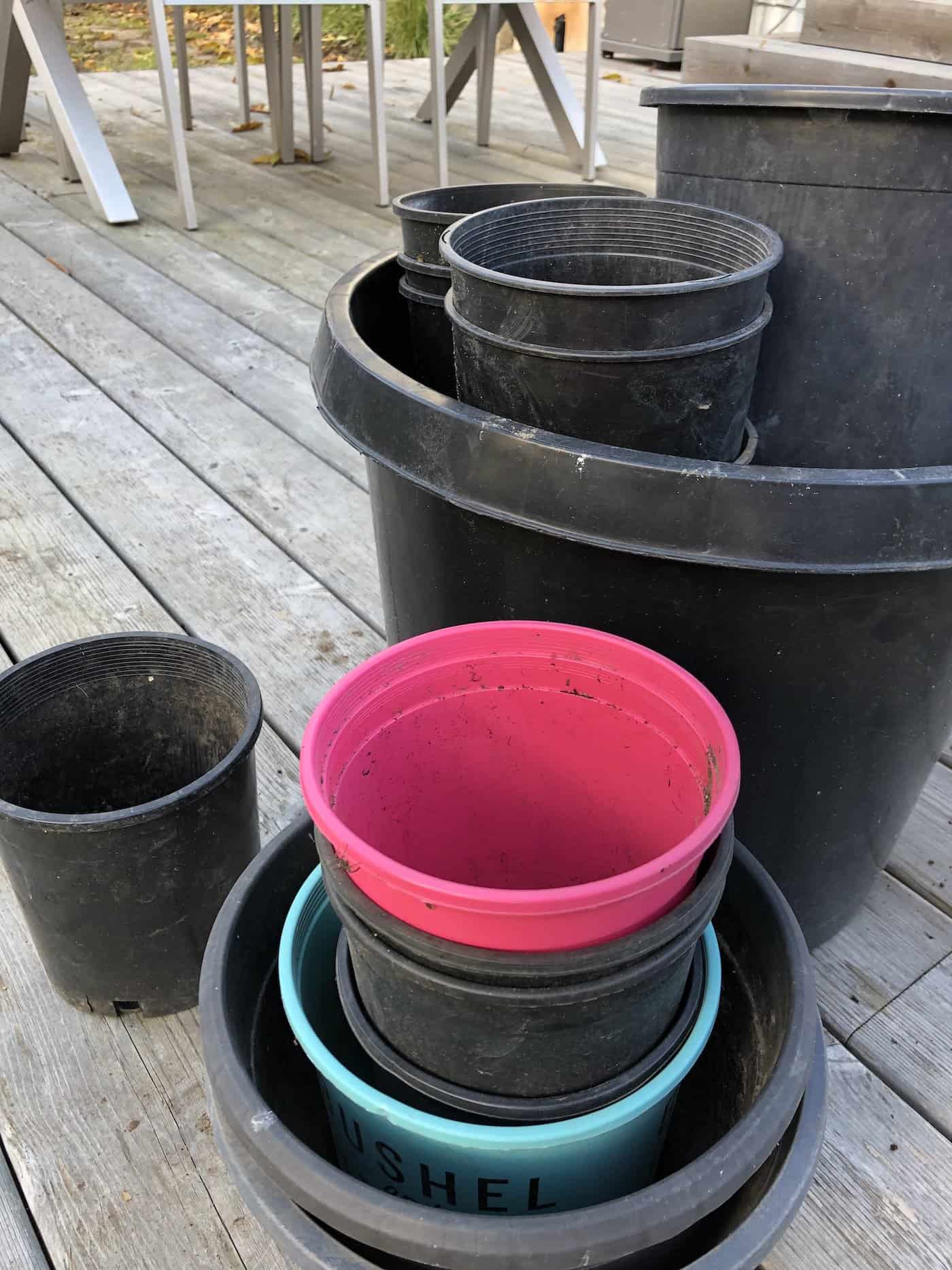
Had your fill of yard work?…
One final tip is that autumn is a great time to support your local Farmers and Nurseries! Farmers often have huge crops to sell at this time of year and often sell what they have for a very good price. You won’t find produce of the same quality at other times of the year, so it’s worth buying in bulk from the Farmers’ Market and freezing/canning your haul for use over the winter.
Nurseries also have very good sales at this time of year as they try to clear out space for next year. Many perennials can be purchased for a bargain and will appreciate being planted in the cooler months. It’s a win-win for fall yard work!
